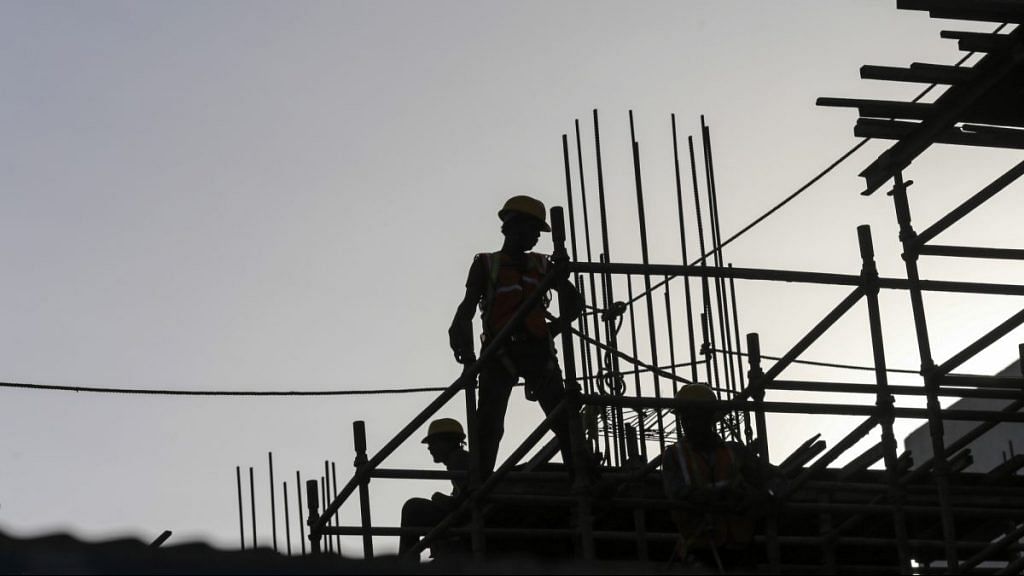John Maynard Keynes was the most influential economist of the first half of the 20th century. Even though he died in 1946, he continues to be the most influential economist of the first half of the 21st century as well.
After studying the Great Depression of 1929, Keynes concluded that in times of huge economic stress, the government should become the spender of the last resort. The idea being that when the private sector wasn’t spending money, the government should step in. This spending would put money into the hands of the people, which they were likely to spend, benefitting businesses and the overall economy.
In fact, Keynes being a master of rhetoric that he was, even suggested that the government should get people to dig holes and fill them up. The money thus earned would be spent and help in the revival of the overall economy.
Also read: India’s young no longer charmed by Modi. Blame economy and ideology
Need higher spending in construction sector
In line with what Keynes had said, one of the sectors that the governments across the world have concentrated on, in times of economic trouble, is the construction sector. The sector, at least in developing countries such as India, tends to create a lot of low-skilled and semi-skilled jobs. Hence, it puts money into the hands of people who probably need the most.
Given that logic, the Narendra Modi-led central government as well as the state governments should be spending more on construction to help India nullify the negative economic impact of Covid-19. Higher spending on construction also becomes important because the sector grew by just 3 per cent in 2019-20 (in nominal terms, not adjusted for inflation). This is the second slowest in the last four decades. The slowest being 1.2 per cent growth in 2015-16.
Also read: India could see millions pushed into extreme poverty due to pandemic: World Bank analysis
The bottlenecks
Nevertheless, is that going to happen? An estimate made by ratings agency Crisil suggests that in 2020-21, the construction investments will contract by 12-16 per cent to Rs 7.3 lakh crore. This takes into account lower capital expenditure of the Modi government as well as state governments during the year, primarily on account of more money being rightly spent on healthcare and public welfare. The fact that tax collections of both the central and state governments are going to be hit during the year, doesn’t really help.
Even if a state government (or a private party for that matter) were to be ready to spend money on a construction project, there are other challenges that might crop up currently. The contractors carrying out the actual construction face several challenges, including trying to maintain social distancing between their workers at the construction sites. They also need to arrange for transport and accommodation of labour. In parts of western and southern India, there might even be a shortage of workers, given that a large number of labourers have left for their native places in states such as Uttar Pradesh, Bihar, Jharkhand, Odisha, Chhattisgarh etc.
If these problems weren’t enough, the challenge of sourcing raw materials such as cement, steel, etc., is also there. Before the construction sector can get up and running, cement and steel companies need to start production. They too have their own set of challenges.
Also read: India needs war cabinets to recover from Covid crisis and put citizens on path to prosperity
But where’s the money?
Having said that, these problems are more or less likely to get sorted out sooner rather than later. The bigger challenge through the year will be the paucity of funds available to governments.
What does not help is the fact that contribution of the private sector to construction spending has fallen over the years. Crisil points out that the share of private spending in construction stood at 26 per cent in 2009-10. It fell to 17 per cent in 2019-20. Whereas the contribution of the state governments to the spending has increased from 43 per cent to 44 per cent over the decade. The central government’s share has gone up from 31 per cent to 39 per cent. This means that during the current year, the construction is even more dependent on the governments than ever before.
Further, the budgetary allocations of several state governments towards infrastructure spending had been cut down even before Covid-19 struck. Crisil points out that these include Uttar Pradesh, Maharashtra and Gujarat. In case of Karnataka, Madhya Pradesh and Tamil Nadu, the allocation is similar to that of last year. In total, these states form around half of the total infrastructure outlay of state governments.
Over and above this, top spending states on infrastructure (Maharashtra, Gujarat and Tamil Nadu) have been most hit by the Covid-19 pandemic. Hence, they will have to divert their funds towards fighting the pandemic.
Also read: Covid shows India needs economic model focused on people at bottom of pyramid, report says
Alternative revenue source
In this scenario, it is important that state governments look at innovative ways of raising tax revenue. Alcohol sales are back on track in most states. The governments now need to be willing to put systems, which allow consumers to buy alcohol online, in place. They can even get into agreements with private companies, instead of creating yet another system from scratch.
Also, given that state finance ministers are members of the Goods and Services Tax (GST) Council, the deciding body for GST, they need to push for the rationalisation of GST rates. Along with this, they should be open to the idea of a substantially lower GST rate on automobiles. This is likely to push up sales, which will mean a higher collection of GST for state governments. It would also mean higher collection of road tax on sale of new automobiles. These things can help a little in what are tough times for the economy.
Vivek Kaul is the author of Bad Money.
